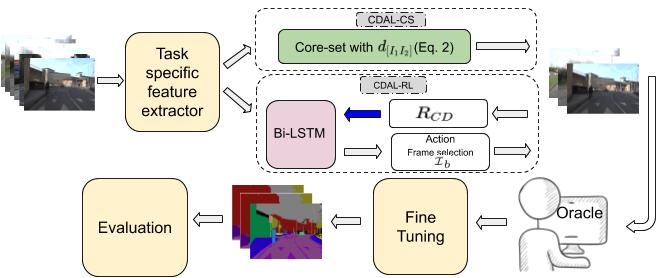Contextual Diversity for Active Learning
Requirement of large annotated datasets restrict the use of deep convolutional neural networks (CNNs) for many practical applications. The problem can be mitigated by using active learning (AL) techniques which, under a given annotation budget, allow to select a subset of data that yields maximum accuracy upon fine tuning. State of the art AL approaches typically rely on measures of visual diversity or prediction uncertainty, which are unable to effectively capture the variations in spatial context. On the other hand, modern CNN architectures make heavy use of spatial context for achieving highly accurate predictions. Since the context is difficult to evaluate in the absence of ground-truth labels, we introduce the notion of contextual diversity that captures the confusion associated with spatially co-occurring classes. Contextual Diversity (CD) hinges on a crucial observation that the probability vector predicted by a CNN for a region of interest typically contains information from a larger receptive field. Exploiting this observation, we use the proposed CD measure within two AL frameworks: (1) a core-set based strategy and (2) a reinforcement learning based policy, for active frame selection. Our extensive empirical evaluation establish state of the art results for active learning on benchmark datasets of Semantic Segmentation, Object Detection and Image Classification. Our ablation studies show clear advantages of using contextual diversity for active learning. The source code and additional results are available at https://github.com/sharat29ag/CDAL.
PDF Abstract ECCV 2020 PDF ECCV 2020 Abstract





 CIFAR-10
CIFAR-10
 CIFAR-100
CIFAR-100
 Cityscapes
Cityscapes
 ssd
ssd